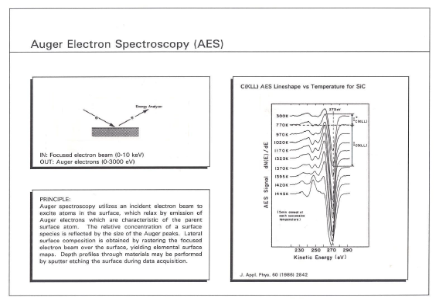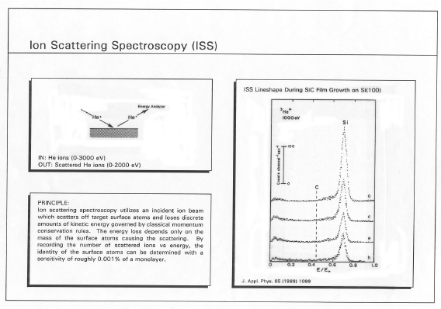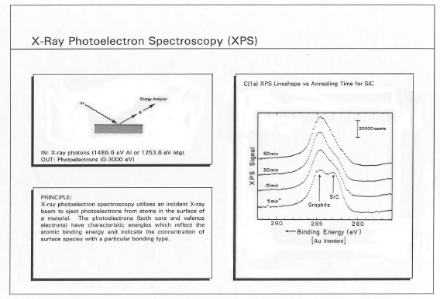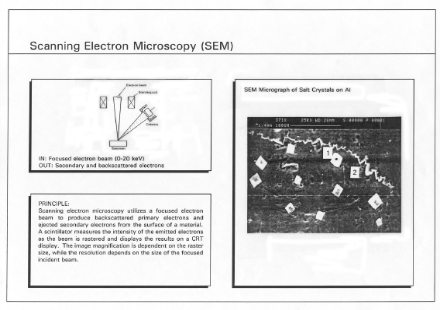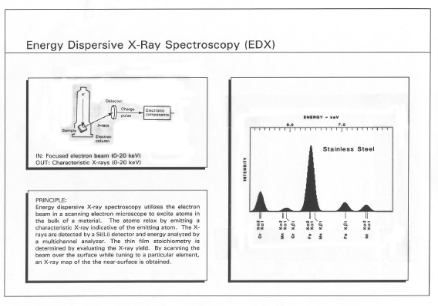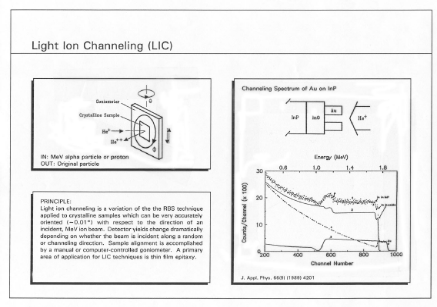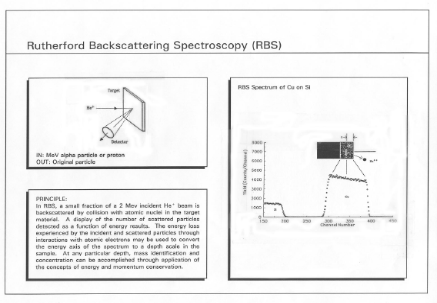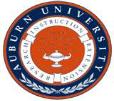

The Physics of Surface Science
Surface Techniques
AUSSL has several standard and specialty surface science techniques that address a
variety of surface and thin film phenomena. Three Kratos XSAM 800 surface analytical
systems with Auger electron spectroscopy (AES), X-ray photoelectron spectroscopy (XPS)
and ion scattering (ISS) enables the study of interfaces with sub-monolayer sensitivity.
The dynamics of surface chemical reactions is probed by scanning kinetic spectroscopy
(SKS), thermal desorption techniques (TPD), and electron-stimulated desorption (ESD).
Rutherford backscattering spectroscopy (RBS) and light ion channeling enable
non-destructive and quantitative materials analysis of layered materials.
Characterization of transport properties and microstructures is carried out by optical
(Nomarski and stereo) microscopy and scanning electron microscopy (SEM), transmission
electron microscopy (STEM), atomic force microscopy (AFM), Hall effect equipment,
current-voltage (I-V), and capacitance-voltage (CV) measurements. Photolithography and
thin film deposition equipment enable the manufacture of circuit test structures, ohmic, and
Schottky barrier contacts.
A brief description of some of our standard techniques . . .
variety of surface and thin film phenomena. Three Kratos XSAM 800 surface analytical
systems with Auger electron spectroscopy (AES), X-ray photoelectron spectroscopy (XPS)
and ion scattering (ISS) enables the study of interfaces with sub-monolayer sensitivity.
The dynamics of surface chemical reactions is probed by scanning kinetic spectroscopy
(SKS), thermal desorption techniques (TPD), and electron-stimulated desorption (ESD).
Rutherford backscattering spectroscopy (RBS) and light ion channeling enable
non-destructive and quantitative materials analysis of layered materials.
Characterization of transport properties and microstructures is carried out by optical
(Nomarski and stereo) microscopy and scanning electron microscopy (SEM), transmission
electron microscopy (STEM), atomic force microscopy (AFM), Hall effect equipment,
current-voltage (I-V), and capacitance-voltage (CV) measurements. Photolithography and
thin film deposition equipment enable the manufacture of circuit test structures, ohmic, and
Schottky barrier contacts.
A brief description of some of our standard techniques . . .



